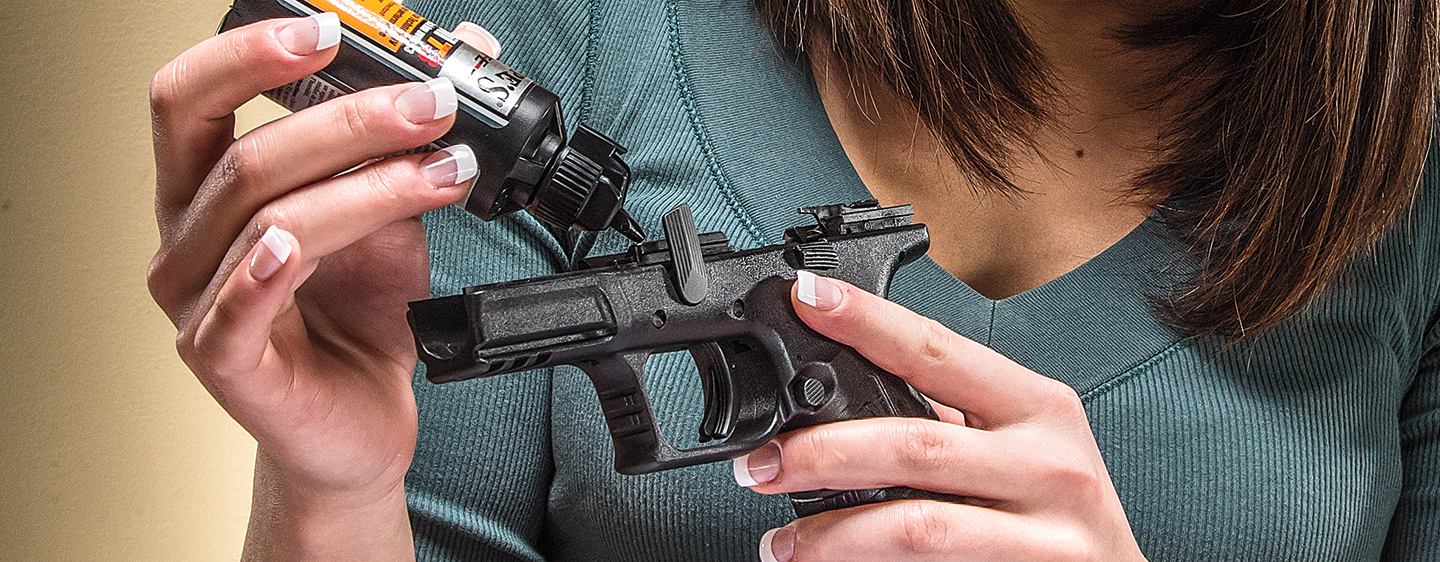Understanding the Impact of Residue Buildup on Firearm Performance
Residue buildup can significantly impair the performance and longevity of firearms. Understanding and addressing this issue is crucial for maintaining optimal shooting accuracy, preventing mechanical failures, and ensuring the overall quality upkeep of your firearms.
The Basics of Residue Buildup
What is Residue Buildup?
Residue buildup refers to the accumulation of gunpowder, metal shavings, fragments, and other debris within a firearm after use. This fouling not only affects the firearm’s functionality but can also lead to corrosion and other forms of degradation over time.
Common Types of Fouling
Carbon Fouling
Carbon fouling is primarily derived from gunpowder residue. When cartridges are discharged, the propellant combusts, leaving traces of carbon inside the barrel, chamber, and other critical components.
Metal Fouling (Copper, Brass, Lead)
Metal fouling occurs due to the interaction between the bullet’s metal material (copper, brass, lead) and the firearm’s barrel during shooting. Over time, these metal residues can accumulate, leading to increased friction and wear.
Powder Fouling
Powder fouling encompasses unburned powder particles left behind after firing a shot. This residue can be particularly challenging to clean, especially if the firearm is used frequently with high-residue ammunition.
How Residue Buildup Affects Firearm Performance
Impact on Accuracy
Accuracy Degradation
Residue buildup can cause severe accuracy degradation. The presence of carbon and metal fragments in the barrel disrupts the bullet’s pathway, leading to erratic trajectories and inconsistent shooting results.
Bullet Velocity Reduction
As residue accumulates, it increases barrel resistance, leading to reduced bullet velocity. This reduction can substantially impact long-range shooting accuracy and overall ballistic performance.
Mechanical Wear and Tear
Increased Friction
Residue buildup leads to increased friction between moving parts. This friction accelerates mechanical wear, particularly in the barrel and chamber, leading to premature degradation of the firearm components.
Wear on Moving Parts
Firearms have several movable mechanisms that are susceptible to residue buildup, such as the trigger assembly. This accumulation can cause the parts to wear rapidly, impacting the firearm’s reliability and lifespan.
Causes of Residue Buildup
Sources of Residue
Gunpowder Residue
When a firearm is discharged, the combustion process generates gunpowder residue. This residue tends to settle in the barrel and other components, forming a sticky and corrosive layer over time.
Metal Shavings and Fragments
Metal shavings and fragments originate from the ammunition’s interaction with the firearm barrel. These particles can exacerbate wear on the barrel, contributing significantly to residue buildup.
Factors Contributing to Buildup
Frequency of Use
Frequent firearm use leads to increased exposure to residue, necessitating regular maintenance to prevent performance issues. Higher shooting frequency usually results in faster buildup of fouling materials.
Type of Ammunition Used
Certain ammunition types are known to produce more residue. High-velocity and lead-based bullets typically leave more residue compared to cleaner alternatives, directly impacting the rate of buildup within the firearm.
Detecting Residue Buildup in Firearms
Signs of Buildup
Visual Inspection
Visual inspection is the first step in identifying residue buildup. Signs such as discoloration, grime, and visible debris on the firearm indicate the need for thorough cleaning.
Performance Testing (Accuracy and Velocity)
Performance testing involves assessing the firearm’s accuracy and velocity over time. Any notable deviations in shooting patterns or bullet speed often signal residue problems that require immediate attention.
Common Areas Prone to Buildup
Barrel
The barrel is the most critical area prone to residue buildup. Carbon, metal, and powder fouling typically accumulate here, causing significant impairments in accuracy and bullet velocity.
Chamber
The chamber of a firearm is another area where residue tends to accumulate. Regular inspection and cleaning of the chamber are vital to avoid issues like feed jams and misfires.
Movable Mechanisms
Movable mechanisms in firearms, including the action, bolt, and trigger assembly, are susceptible to residue. Maintenance in these areas ensures smooth operation and extends the firearm’s lifespan.
Cleaning and Maintenance Practices
Cleaning Regimen
Regular Cleaning Schedule
A regular cleaning schedule is essential for optimal firearm performance. The frequency of cleaning should be adjusted based on the firearm’s usage rate to prevent excessive residue buildup.
Key Areas to Clean
Key areas to focus on during cleaning include the barrel, chamber, and all movable parts. Proper cleaning of these areas ensures the firearm remains accurate, reliable, and safe to use.
Types of Cleaning Solvents and Tools
Solvents for Carbon and Metal Fouling
Various cleaning solvents are specifically designed to target different types of fouling. Solvents for carbon and metal fouling effectively loosen and dissolve residue, making it easier to remove during cleaning.
Cleaning Kits and Tools
Utilizing the right cleaning kits and tools, such as brushes, patches, and bore snakes, can significantly enhance the cleaning process. These tools ensure that all residue, no matter how stubborn, is removed from the firearm.
Preventing Residue Buildup
Proper Lubrication
Types of Lubricants
Using appropriate lubricants can prevent residue adherence and reduce friction. High-quality gun oils and grease create a protective layer, minimizing the harmful effects of residue buildup on the firearm’s performance.
Application Techniques
Effective application techniques involve applying a thin layer of lubricant to key areas after cleaning. Regular lubrication ensures that moving parts function smoothly and reduces the risk of mechanical wear.
Routines and Practices
Post-Shooting Cleaning
Cleaning the firearm immediately after use helps prevent residue from hardening and becoming more difficult to remove. Quick post-shooting cleaning ensures minimal fouling effects and greater firearm longevity.
Regular Inspections
Regular inspections allow for early detection of residue buildup and other potential issues. Routine checks ensure any buildup is addressed promptly, maintaining the firearm’s optimal condition.
The Role of Residue Buildup in Firearm Malfunctions
Common Malfunctions Caused by Buildup
Misfires
Residue buildup can lead to misfires, where the cartridge fails to discharge properly. This issue is primarily caused by fouling obstructing the firing pin or primer, leading to unreliable shooting.
Jamming and Feeding Issues
Jams and feeding issues occur when residue prevents the proper cycling of ammunition. These problems are often found in semi-automatic and automatic firearms, where smooth operation is critical.
Preventative Measures
Regular Maintenance
Regular maintenance, including cleaning, lubrication, and inspections, prevents residue buildup from causing malfunctions. Consistent care ensures that the firearm remains reliable and safe to use.
Quality Control on Ammunition
Using high-quality ammunition with minimal residue production can significantly reduce fouling. Quality control on ammunition usage is a proactive step in preventing excessive buildup inside the firearm.
Importance of Professional Gunsmithing
When to Consult a Gunsmith
Deep Cleaning
For deep cleaning tasks, especially where residue has hardened or caused significant fouling, consulting a professional gunsmith is advisable. Professional services ensure thorough cleaning beyond routine maintenance.
Precision Maintenance
Gunsmiths provide precision maintenance services critical to keeping firearms in peak condition. Their expertise can rectify intricate issues that might not be apparent during routine cleaning and inspections.
Services Provided by Gunsmiths
Detailed Scrutiny of Firearms
A gunsmith’s detailed scrutiny includes examining every component of the firearm for wear and residue buildup. Their detailed inspections help identify hidden issues and ensure comprehensive maintenance.
Specialized Cleaning and Lubrication
Gunsmiths use specialized cleaning and lubrication techniques to maintain firearms. Their methods are more advanced than typical at-home maintenance, providing a higher level of care and preservation.
Impact of Residue Buildup on Firearm Longevity
Corrosion and Rust
Causes and Prevention
Residue buildup can lead to corrosion and rust, especially in firearms stored without proper care. Preventive measures include regular cleaning, drying, and applying anti-corrosion protectants.
Maintaining Longevity
Regular Maintenance Practices
Consistent and thorough maintenance practices are key to extending the lifespan of firearms. Regular cleaning, lubrication, and inspections keep firearms in pristine condition.
Storage Tips to Prevent Buildup
Proper storage, such as using silica gel packs in gun safes and avoiding damp environments, can prevent moisture-related buildup and residue formation. Safe and secure storage practices ensure longevity and reliability.
Keep an eye for more news & updates on Nextweblog.com!






